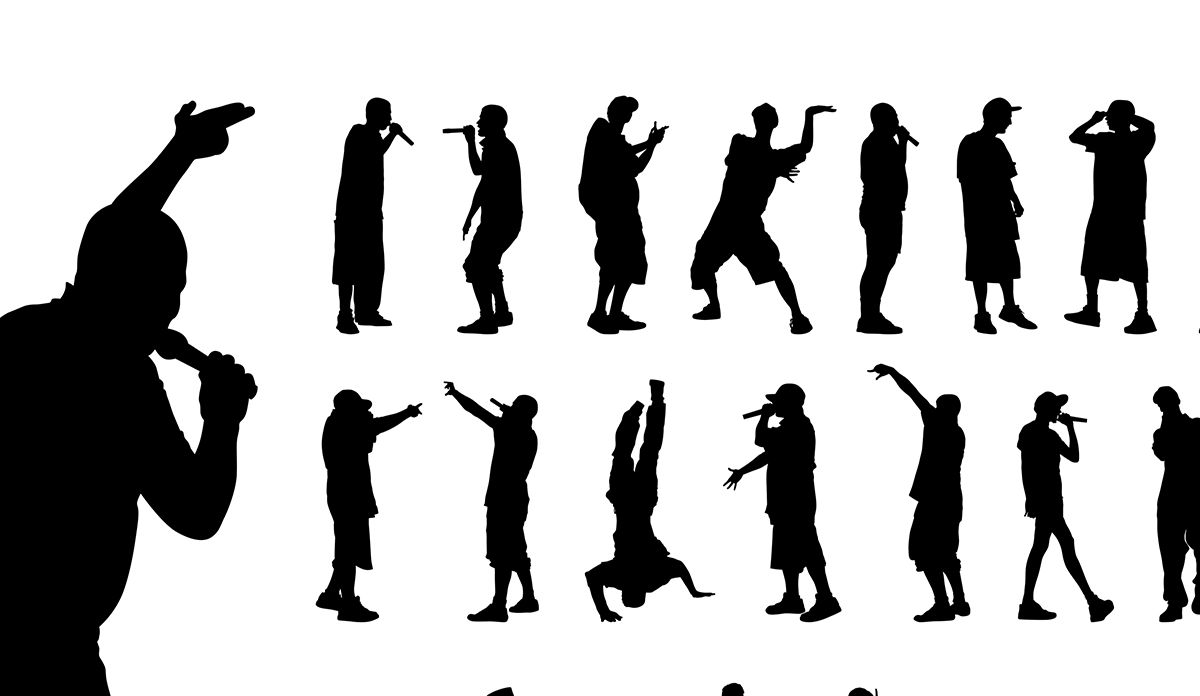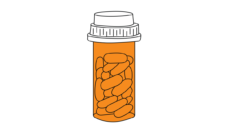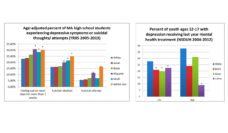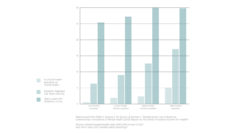You left me falling and landing inside my grave /I know that you want me dead /I take prescriptions to make me feel okay/ I know it’s all in my head – Juice WRLD
US youth spend about 40 hours a week listening to music. Their music of choice? Rap. Research shows that rappers serve as role models to their audience as celebrity discussions of mental health can reduce stigma and encourage fans to seek help. Many rap fans are young Black men, who are one of the groups least likely to use mental health services. With 78% of lead rap artists being African American, Black youth may especially relate to mental health issues mentioned in rap.
Between 2008 and 2017, the US saw a drastic increase in suicide risk among young people. During this time, the rate of suicide between ages 10 and 24 increased by 56%, and suicide rates for people ages 15 to 24 were the highest they had been since 1960. Over this ten-year period, suicide rates for Black youth increased by 60%.
Given that rap is an autobiographical art form, a recent study analyzed mental health discourse in rap music to see if there were trends relating to this period of increased suicide rates. Trained coders reviewed lyrics from popular rap songs between 1998 and 2018. They looked for lyrics referencing anxious, depressive, and suicidal thinking (“Went through deep depression when my mama passed”). But rap is poetry, and what would poetry be without metaphor? Noting that artists may use indirect language when discussing difficult subjects, the coders also examined mental health metaphors (“Pushed me to the edge”).
The Figure notes the stark increase in mental health themes around 2008. During this year, rapper Kanye West released his album 808s and Heartbreaks. The album’s emotional honesty was heralded as “groundbreaking” by Rolling Stone, and was “inspiration” for rappers Drake and Post Malone who had top songs in 2018 with mental health references. 808s and Heartbreaks was released one year following the 2007 economic recession which was especially hard-hitting for the Black community.
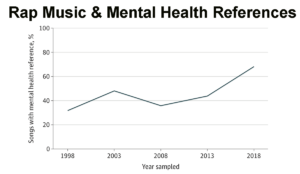
The percentage of rap songs referencing suicide (0% to 12%) and depression (16% to 32%) increased dramatically as did metaphorical language referencing mental health (8% to 44%). References to suicide started to emerge notably in 2013.
Music, as most art, is a reflection of the times. A surge in mental health references to depression, anxiety, and suicidal ideation around 2013 coincides with the murder of Trayvon Martin.
The content in rap music has been highly controversial, often involving violent and hypersexual expressions. But it’s not just the lyrics that make rap palpably negative – it is the music itself. Rap music is often composed in a minor key (which makes music sound dark or tragic), coalesced with pulsating beats and aggressive basslines. Rap also packs a lot of lyrics into cadence similar to spoken word, resembling conversation. In concert with lyrics about mental health struggles, rap sounds like someone telling their story, a story you can feel.
On one hand, negative framing could lead to “copycat behavior” where listeners act out harmful behaviors mentioned in rap music. On the other, this candor may help rappers connect with their listeners, making them feel like they aren’t alone. If rappers are speaking about their mental health issues, it could encourage us to do the same.
Rap is a story, told by poetry, bound by a beat. By discussing mental health, rappers can help us bring emotions into conversation that initially may only seem fit for song.
Figure from Kresovich A, Reffner Collins MK, Riffe D, Carpentier FRD. A Content Analysis of Mental Health Discourse in Popular Rap Music. JAMA Pediatr. 2021;175(3):286–292.









